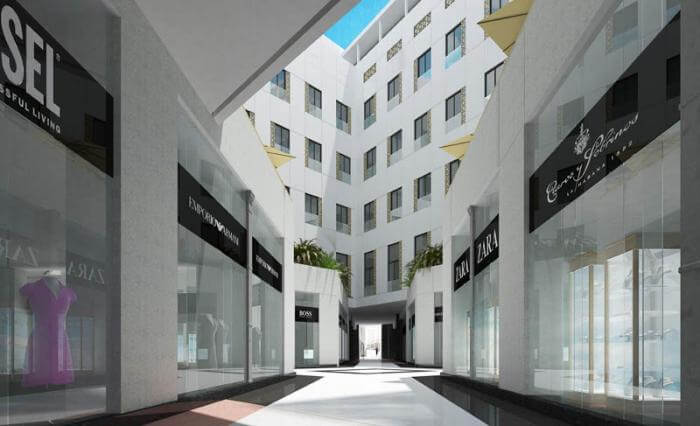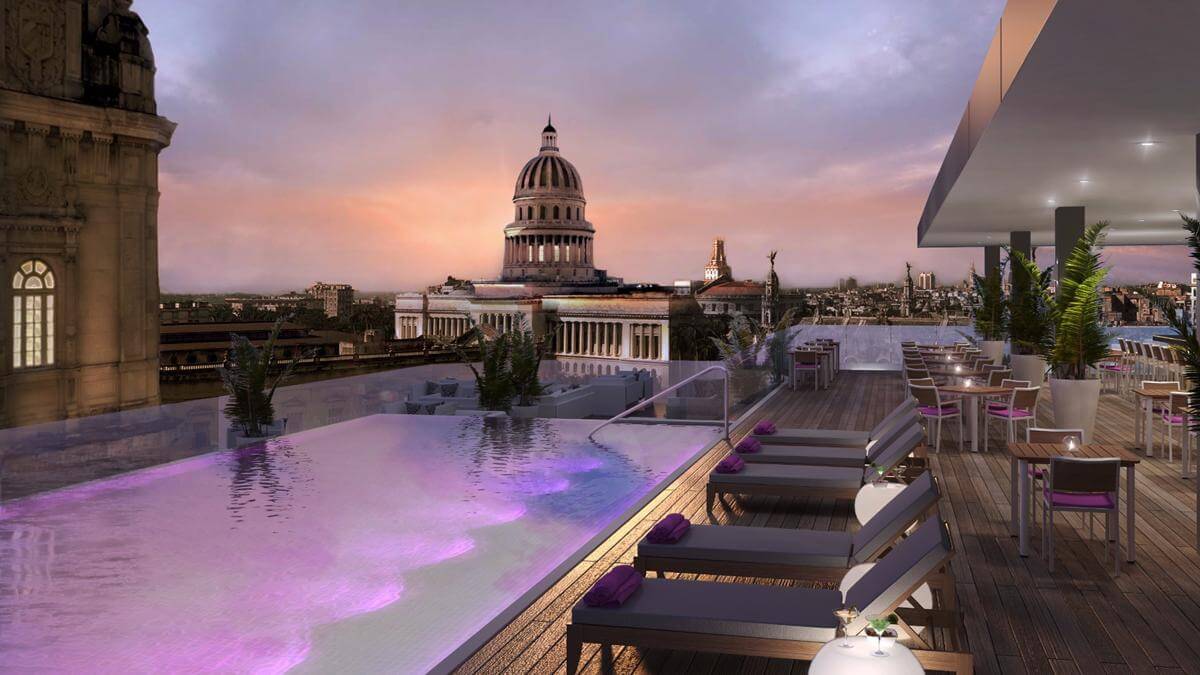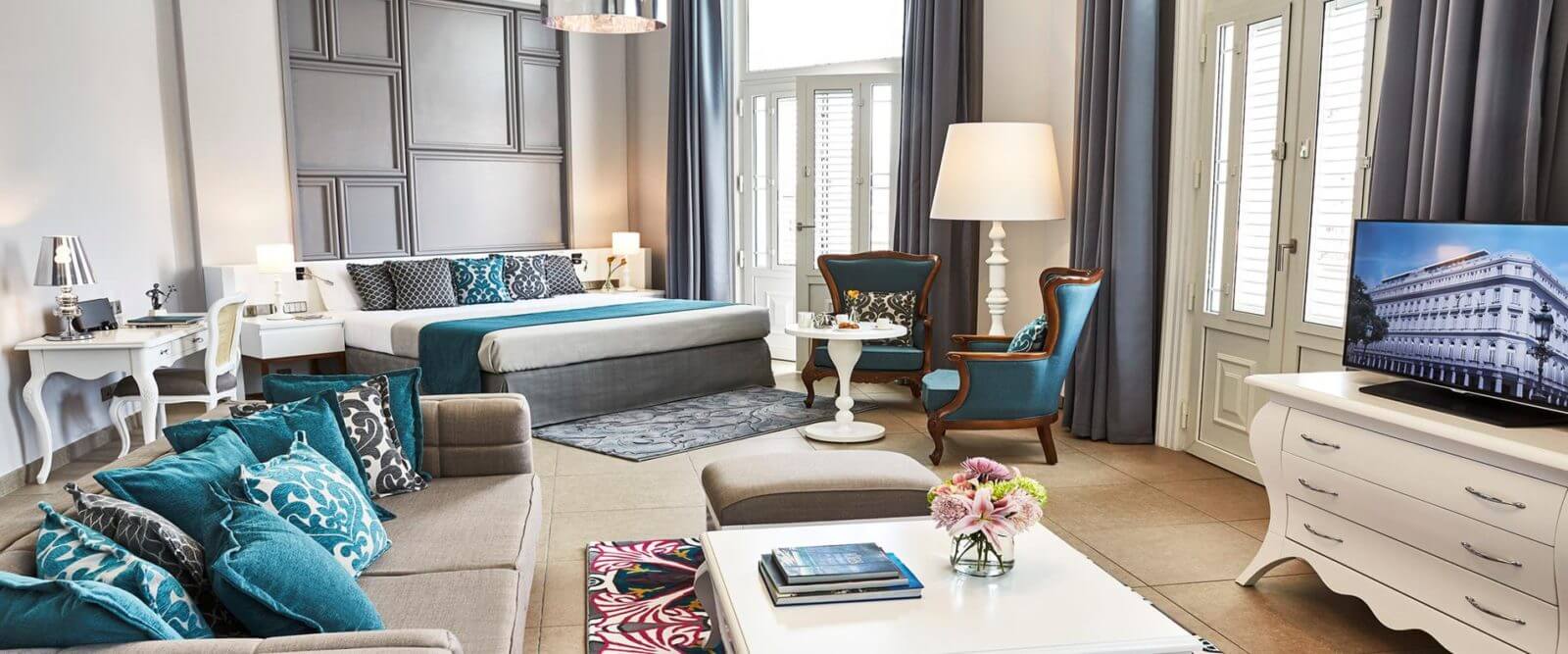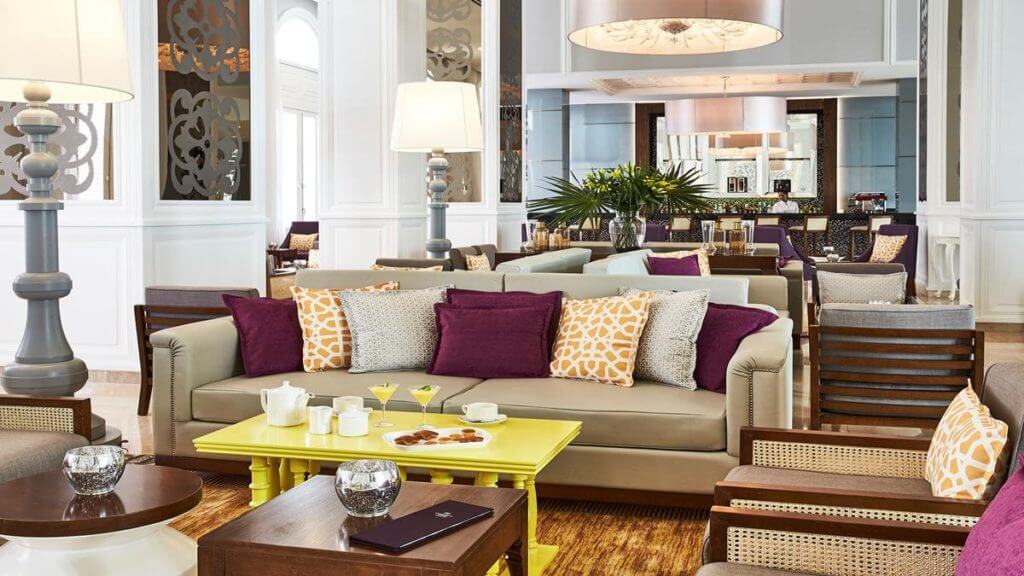Exclusive shops of Gucci and Lacoste, 246 luxury rooms, spa … No, it is not a European capital; It is Havana.
The Gran Hotel Manzana Kempinski is the first hotel labelled as “5 stars plus” in the Caribbean country, setting a benchmark in the touristic offer of the island. Paradoxically, it has been Garcia Requejo, a small and familiar firm from Spain, the company responsible for creating the lighting solutions and products of the emblematic luxury hotel.

García Requejo landed in Cuba a few years ago. After the bursting of the real estate bubble in Spain, the company lost most of its turnover and had to reinvent itself, directing all its activity to the foreign market. In that context, the company came into contact with the corporation that manages the hotel sector in Cuba and, at present, this small Spanish company is responsible for the lighting and furniture of many of the hotel chains operating in Cuba.
One of the “lobbies” of the hotel, with the bar on the background
According to the manager, Rebeca García, the key to its success is the ability to adapt to hotel requests. “Many companies in the sector have boundaries when it comes to developing the designs of lamps and furniture requested by hotels. Many suppliers can provide, exclusively, what´s in their product catalog. We help to develop the conceptual ideas that the interior designers present us and to turn them into reality.
Meanwhile, in Cuba it seems that the tourism growth of recent years is, currently, overseeing an uncertain future. After reaching historic highs in the volume of visits, in 2017 and experiencing a stage of unblocking with the Obama administration, the arrival of Trump to the White House has changed bilateral relations in a radical way. At this time, nobody knows how Trump’s foreign policy will affect the future of tourism on the island, basically, because nobody knows what Trump’s foreign policy will be. Meanwhile, tourism on the Caribbean island continues to grow. According to Cuban government sources, in November 2017, 4 million tourists had already been reached (54 days before the previous year) and more than 2,000 new hotel rooms had been created. These figures are added to the offer of more than 65,000 hotel rooms on the island.
Any professional in the tourism or construction sector can explain how, in the island, there have been buildings in which, for years, hanged posters announcing that they were going to be converted into hotels. Today is the day when, finally, cranes can be seen in those buildings. Apparently, the Cuban bureaucracy is unclogging and the promoters are already capable of launching projects without getting stuck in the procedural paperwork of the Cuban regime.

In that context of tourism promotion, it has been the Cuban government itself that has launched the Gran Hotel Manzana Kempinski, raising the hotel offer in Cuba one level and making clear its commitment to tourism. The future of the tourism industry in the island might, therefore, have good prospects, even if the Trump administration decides to intensify the blockade policies. In the small village of Miranda de Ebro they trust that it is so ..



